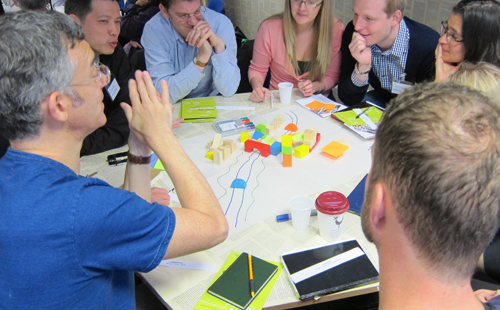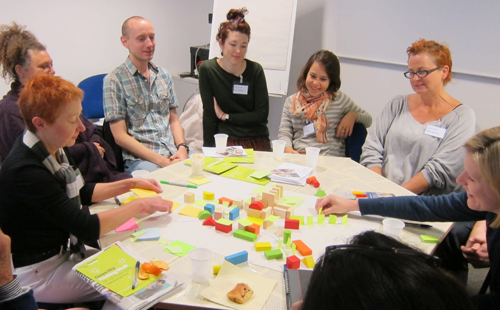Written by:
Green Sky Thinking Week held from 17-21 September was set up by Open City to highlight green expertise in the built environment and encourage deeper collaboration for sustainable development between industry sectors. The theme for 2012 was ‘Mapping Sustainable London’ which sought to highlight and unpack best practice and thinking in how a sustainable city could evolve. The Glass-House held a breakfast workshop on Wednesday entitled ‘Future Cites: A Collective Vision’, aimed at getting practitioners working and thinking in a collaborative way towards designing and planning the city.
With just over twenty people in attendance, participants were split into two groups. One group was asked to design what they collectively believed to be a sustainable city, while members of the other group were given a specific perspective/role each which they had to adopt in their design approach.
The former group, performed in an organic way, throwing out ideas from the get go, making impulsive decisions and rapidly shaping their city into a fully-conceived organ. The group who had to adopt a particular position were far more methodical and theoretical in their approach and by the end of the exercise what they had produced was a set of ideas and concepts rather than a fully realised city with all its quirks and nuances.


The groups embraced the task at hand with an energy and intelligence which was really encouraging!
Key sustainability themes raised included affordability, access, self-sufficiency, flexible building uses and design intelligence. As we discussed the group outcomes, a number of key issues arose.
How do you allow for choice in a vision for a sustainable city? The gift of choice is one, which our democracies hold dear, and we celebrate diversity in our social and physical environments.
How does a sustainable city create a synergy with its hinterland, and beyond? The groups suggested features such as a closed resource loop (i.e. using waste for energy generation, growing and supplying all food needs) and creating a city currency, but this begs the question of whether an inward looking city is a sustainable one?
Above all it was felt that a truly sustainable city would involve such a complete transformation of our habits, and is a concept which is so alien to us that it is almost impossible to image this alternative. Many felt our capitalist societies will never allow the sustainable city to flourish.
So what does this mean for our sustainability goals? Can we hope to create a sustainable city in the truest sense of the word? What are the real sustainable solutions for our future cities?

